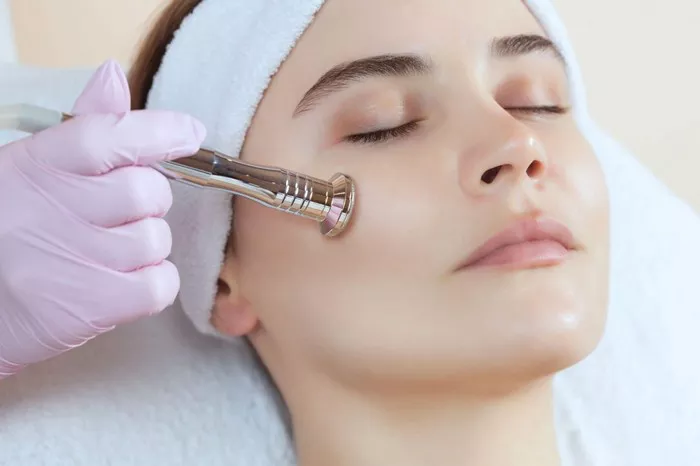Microdermabrasion is a popular non-invasive cosmetic procedure that aims to rejuvenate the skin’s appearance by gently exfoliating the outermost layer. It has gained recognition for its ability to improve skin texture, reduce fine lines and wrinkles, and address various skin concerns. However, like any cosmetic treatment, microdermabrasion is not without its potential side effects. In this article, we will explore the world of microdermabrasion, its benefits, and the possible side effects to help you make an informed decision if you are considering this procedure.
Understanding Microdermabrasion
Microdermabrasion is a minimally invasive cosmetic procedure that involves the use of a handheld device to exfoliate the top layer of skin, known as the stratum corneum. The device typically employs tiny, rough particles or a diamond-tipped wand to gently remove dead skin cells, debris, and impurities from the surface. This process encourages skin renewal and the production of collagen and elastin fibers, resulting in a fresher, smoother, and more youthful complexion.
Key Aspects of Microdermabrasion
Exfoliation: Microdermabrasion exfoliates the skin, removing the outermost layer to reveal the healthier, younger-looking skin beneath.
Non-Invasive: It is a non-surgical and non-invasive procedure, making it suitable for individuals seeking skin improvement without downtime.
Quick Procedure: Microdermabrasion sessions are relatively quick, typically lasting around 30 minutes, and patients can resume their daily activities immediately afterward.
Multiple Benefits: This procedure can address a variety of skin concerns, including fine lines and wrinkles, acne scars, uneven skin tone, sun damage, and mild hyperpigmentation.
Safe for Most Skin Types: Microdermabrasion is generally safe for all skin types and colors, with minimal risk of skin discoloration or scarring.
Potential Side Effects of Microdermabrasion
While microdermabrasion is considered a safe and effective procedure for most individuals, it is essential to be aware of potential side effects. These side effects are typically mild and temporary but can vary depending on individual skin type and the intensity of the treatment. Common side effects may include:
Redness: Immediately following the procedure, some individuals may experience mild to moderate redness, similar to a sunburn. This usually subsides within a few hours to a day.
Sensitivity: The skin may feel more sensitive or tender after microdermabrasion. It is essential to use a gentle skincare routine and avoid harsh products for a few days post-treatment.
Dryness: The exfoliation process can temporarily strip the skin of moisture, leading to dryness. Using a hydrating moisturizer can help alleviate this side effect.
Minor Swelling: In some cases, minor swelling may occur, particularly if the treatment was more aggressive. Swelling usually resolves within a day.
Bruising: Although rare, bruising can occur, especially in individuals with very sensitive skin. Bruises are usually small and fade within a few days.
Post-Inflammatory Hyperpigmentation (PIH): In individuals with darker skin tones, there is a slight risk of developing post-inflammatory hyperpigmentation, which causes darkening of the skin in the treated areas. This risk can be minimized by carefully following aftercare instructions and avoiding sun exposure.
Risk of Infection: While rare, there is a minimal risk of infection if the treatment equipment or the treated area is not properly sanitized. It is crucial to choose a reputable and experienced provider to minimize this risk.
Unwanted Side Effects with Home Devices: Home microdermabrasion devices are available but should be used with caution. Inexperienced or improper use can lead to adverse effects, including skin abrasions and irritation.
Minimizing the Risk of Side Effects
To minimize the risk of side effects and ensure a safe and effective microdermabrasion experience, consider the following tips:
Choose a Qualified Provider: Seek treatment from a licensed and experienced aesthetician or dermatologist who is knowledgeable about the procedure and has a track record of safe practices.
Consultation: Prior to treatment, have a consultation to discuss your skincare goals, any underlying skin conditions, and the expected outcomes of microdermabrasion.
Follow Aftercare Instructions: Adhere to the aftercare instructions provided by your skincare professional. This may include using gentle skincare products, avoiding sun exposure, and refraining from harsh exfoliation for a specified period.
Protect Your Skin: Apply broad-spectrum sunscreen daily, even on cloudy days, to protect your newly exfoliated skin from UV damage.
Hydration: Keep your skin well-hydrated by using a moisturizer suitable for your skin type. Hydrated skin recovers more effectively and is less prone to side effects.
Conclusion
Microdermabrasion is a popular and generally safe cosmetic procedure that offers various benefits for improving skin texture and appearance. While potential side effects are typically mild and temporary, it is essential to be aware of them and take precautions to minimize their occurrence. Consulting with a qualified skincare professional and following their guidance and aftercare instructions will help ensure a positive and satisfying microdermabrasion experience. When performed correctly, microdermabrasion can leave your skin looking refreshed, rejuvenated, and glowing.


